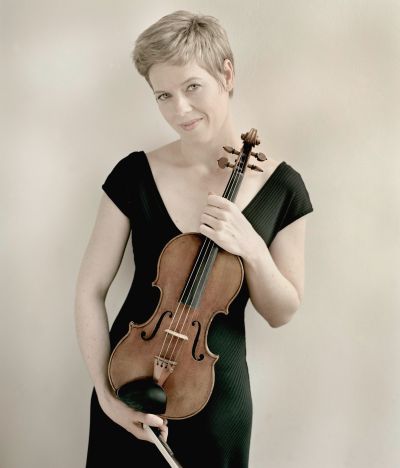 Switzerland Mendelssohn, Britten: Isabelle Faust (violin) , Tonhalle Orchestra, Sir Roger Norrington (conductor), Zurich 16.5.2013 (JR)
Switzerland Mendelssohn, Britten: Isabelle Faust (violin) , Tonhalle Orchestra, Sir Roger Norrington (conductor), Zurich 16.5.2013 (JR)
Mendelssohn: Overture “Ruy Blas”
Britten: Violin Concerto
Mendelssohn: Symphony No. 3 “Scottish”

Call me old-fashioned, but I still like a concert to begin with a jaunty overture and “Ruy Blas”, one of Mendelssohn’s most popular works, hits the spot nicely. Often played by school orchestras, sometimes even with the right notes, it is good to hear a prestige orchestra remind us of its simple but effective glories. It was written in an amazing three days. Norrington employed double woodwind for a fuller sound. Norrington nowadays is a conductor, sad to report, who appears to be firing on only three cylinders, doubtless due to his health and age, and this enchanting overture, whilst sprightly and sparkling, did not really spring to life; perhaps rehearsals had been too superficial. Or maybe the strain of three evening performances and an additional midday concert the same day (the whole programme minus the concerto) had simply taken their toll.
The Britten Violin concerto is not a work which endears itself immediately; it’s not a laugh a minute. It may be known by some British music-lovers but for the Swiss this will have been a difficult initiation, especially if they had taken no time to read the concert programme before the concert. Some have called the work a neglected masterpiece; it is certainly a rarity in concert halls nowadays, even in this year, the centenary of Britten’s birth. Written in 1939, just after the composer’s exile to the United States, it was premiered in New York. Isaac Stern thought it unplayable, but German-born violinist Isabelle Faust showed us he was wrong.
Faust delivered a barn-storming performance, full of tension and power, overcoming the work’s many demanding technical difficulties with apparent ease – huge leaps, double-stops, double-stop harmonics, pizzicato strums, and the lightest and highest of harmonics. Faust’s bow was flying all round her Stradivarius and the audience, even if bemused by the piece itself, were spellbound by her playing. Britten clearly foresaw the impending horrors of World War II. This is not the Britten of Peter Grimes, Billy Budd, or even the War Requiem but an even more sombre Britten in the mould of Prokofiev or Shostakovich (especially the violent Scherzo). The coda of the Passacaglia was most moving, reminding me of Nielsen, ending the work with a seeming question mark. Faust told me afterwards that she would love to record the work. Recording companies: why not follow Faust’s Diapason d’Or/Gramophone Award/Echo Klassik award-winning performance of the Berg and Beethoven concertos (under Abbado and the Mozart Orchestra) with Britten? Faust’s energy seemed unbounded and she delighted the audience with a delicate Bach Partita by way of encore.
I struggle to hear much Scottish-ness in Mendelssohn’s “Scottish” Symphony; but I can rest easy, as even Schumann apparently muddled it up with the Italian symphony. After the work’s brooding introduction, Norrington gave us a flowing and yet vigorous account of the first movement. The second movement Vivace non troppo allowed Sir Roger to deliver his trade mark turns to the audience to see we were all thoroughly enjoying ourselves; the orchestra were certainly all smiles. Wherever there was a quirky sound, perhaps evoking bagpipes, Sir Roger made sure we all heard it. Vibrato was banned, of course, though I spotted several back-desk violins resort to habit.
Norrington returned to serious mode for the lyrical and noble Adagio before launching into the effervescent finale.
John Rhodes